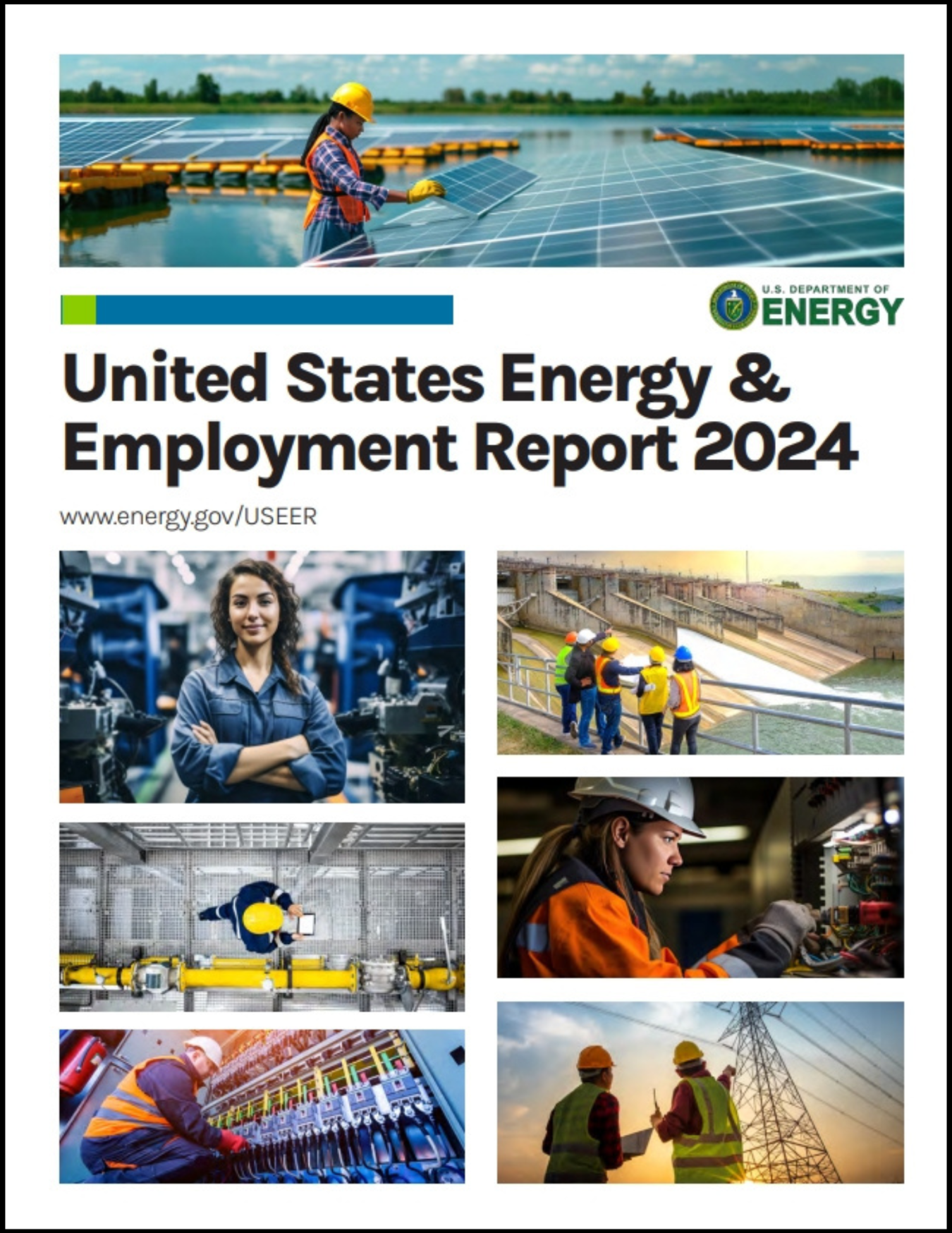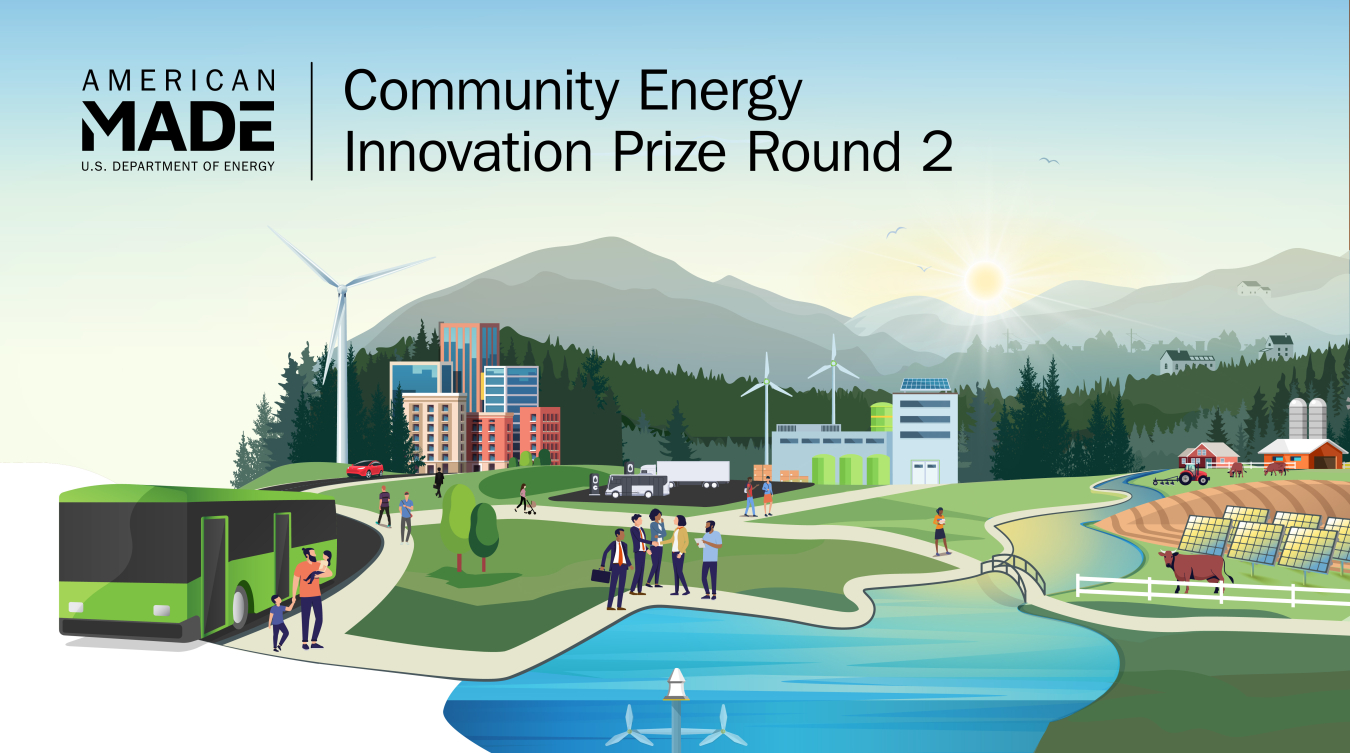Highlights
-
 The landing page for U.S. Energy & Employment Jobs Report (USEER).January 28, 2025
The landing page for U.S. Energy & Employment Jobs Report (USEER).January 28, 2025 -
DOE’s investments prioritize protecting workers’ fundamental labor rights, creating good quality jobs and scaling inclusive opportunities for people to benefit from these jobs.
DOE’s energy workforce strategy supports the energy sector’s transformation.
Principles: DOE’s strategy to support the development, retention and advancement of the energy workforce is driven by 8 core principles.
- Use data: Leverage data to shape workforce investments, including on labor market demand and supply, measures of workforce development investments’ effectiveness, as well as equity and quality measures for energy jobs.
- Prioritize careers: Prioritize broad occupational training for careers, rather than task training for unique (sometimes short-term) jobs.
- Break down silos: Break down silos across the Department’s workforce efforts to avoid investing only on workforce developing geared towards specific technologies or narrow tasks.
- Boost capacities: Leverage, partner with, and boost the capacity of the existing workforce and education infrastructure, including union-sponsored apprenticeship, pre-apprenticeship, and labor-management partnerships, to impact job quality and equity.
- Incent employers’ role: Use every tool in DOE’s toolbox to incentivize employer commitment to direct hiring, retention, and career pathway strategies.
- Prioritize partnerships: Focus on partnerships over standalone programs.
- Center job quality and equity: Drive employer commitment to and investment in job quality and equity.
- Measure, evaluate, adjust: Choose meaningful metrics—then measure early, evaluate often, and make timely adjustments the workforce strategy to meet mission-critical goals.
Key Activities: Shaped by these principles, DOE supports building and retaining the energy workforce through 5 areas of activities.
- Grow good jobs in manufacturing and energy supply chains: Buy America and domestic content provisions, coupled with investments to onshore clean energy manufacturing and supply chains, supports U.S. workers benefiting from the global transition to clean energy.
- Invest in workforce education and training initiatives: DOE provides financial assistance to support raising awareness of and scaling skills attainment across a wide range of occupations and industries in the energy sector.
- Create good jobs and scale inclusive career pathways through incentives in clean energy investments: Within DOE’s financial assistance for clean energy deployment (grants and loans), DOE strongly incentivizes commitments and plans to create good quality jobs and build inclusive opportunities for people to succeed in those jobs.
- Approach workforce development through high-road sectoral strategies: DOE leads and supports a variety of high road sectoral workforce strategies that advance a coordinated approach to skills, productivity, job quality, and job access. These initiatives also advance availability and access to Registered Apprenticeship opportunities.
- Conduct research and analysis: DOE conducts robust research and analysis on the energy workforce, equipping stakeholders across the energy sector with vital information.
Energy Workforce Advisory Board Strategy
The Energy Workforce Advisory Board submitted a comprehensive, forward-looking recommended strategy to DOE on the Department’s role in supporting the development of the energy workforce. As called for in the Bipartisan Infrastructure Law, DOE established the 21st Century Energy Workforce Advisory Board (EWAB), a federal advisory committee made up of 13 non-federal experts from various industries, that was directed to produce a set of recommendations for DOE on its role in supporting the development of the energy workforce. Next, the Department will issue a report that responds to each recommendation within the EWAB’s strategy. Read the EWAB’s report here and see a summary deck.
Investing in America: A Future Forged of Steel
Press Releases
-

- American Manufacturing
- Renewable Energy
- Energy Workforce
CONCEPT Phase Applications are now open in three tracks focused on clean energy, manufacturing, and transportation projectsJanuary 15, 2025 -
- Careers
- Environmental and Legacy Management
- Energy Efficiency
- Energy Workforce
- Research, Technology, and Economic Security
The diverse projects interns worked on this summer are gearing toward LM meeting its goalsOctober 29, 2024 -

- Clean Energy
- Renewable Energy
- Energy Workforce
- Energy Justice
- Careers
DOE Recognizes Nine Leaders for their Outstanding Achievements in Tackling the Biggest Challenges Facing our Transition to a Clean Energy FutureOctober 23, 2024 -
- Cybersecurity
- Energy Security
- Electric Grids
- Energy Workforce
- Research, Technology, and Economic Security
The U.S. Department of Energy (DOE) announced that New York University (NYU) has been selected to establish a new university-based electric power cybersecurity center.October 2, 2024
From Our Blogs
-

- Wind Energy
- Renewable Energy
- Energy Workforce
- Careers
- Wind
January 17, 2025 -
- Energy Workforce
- Clean Energy
- Careers
- Renewable Energy
January 6, 2025 -
- Entrepreneurship and Advanced Manufacturing Workforce
- Energy Workforce
- American Manufacturing
- Advanced Manufacturing Processes
- Build America, Buy America Act (BABA)
- Circular Economy and Sustainable Manufacturing
- Supply Chains
December 10, 2024 -
- Careers
- Nuclear Energy
- Energy Workforce
- Environmental and Legacy Management
- National Labs
October 29, 2024

